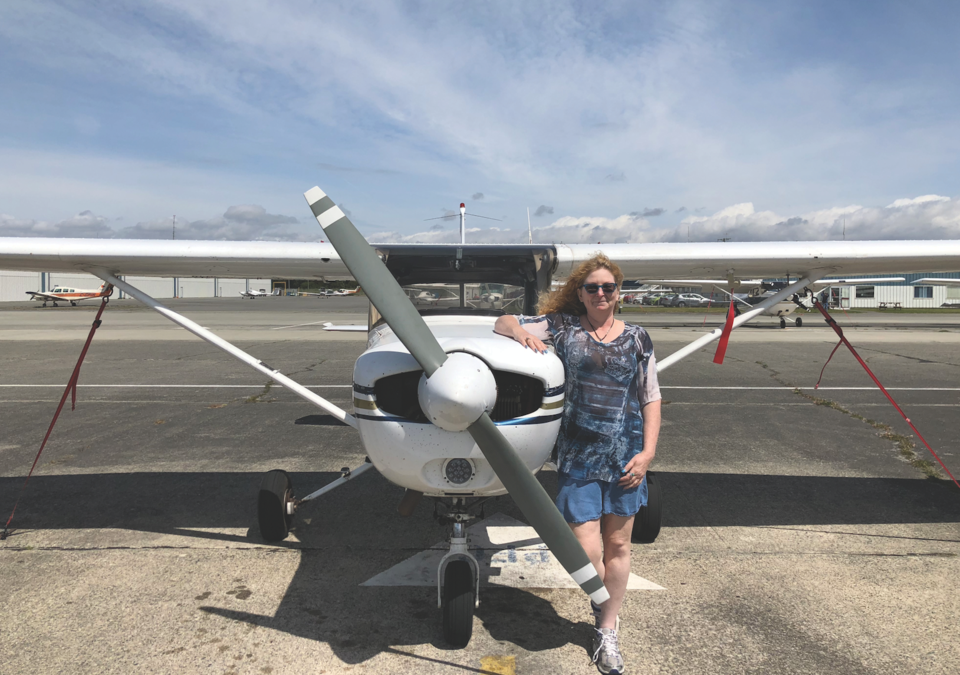Do you know who is most likely to get lost and call search and rescue (SAR) for help this time of year?
Cathalynn Labonté-Smith does.
“Mushroom pickers,” she says. “I started reading about how mushroom pickers get lost: they have their heads down, they’re secretive, they don’t want anyone to know where they are [to keep their picking locations secret].”
That might be how a mother and her 20-month-old got lost while on the hunt for fungi in Powell River. After an overnight search, a SAR team located them and ushered them to safety via ATV.
“It did have a happy ending,” she adds. “Any time there’s a child involved in a rescue, everybody comes out.”
Labonté-Smith, who splits her time between North Vancouver and Gibsons, where her husband is a search-and-rescue volunteer, knows not only about mushroom pickers, but also avalanche, cave, K9, ice, and swift-water rescues, too.
That’s because she spent months interviewing SAR volunteers from across North America for her new book, Rescue Me: Behind the Scenes of Search and Rescue, which came out in early October.
“We’ve all seen the North Shore Rescue series [Search and Rescue: North Shore] on the Knowledge Network. I was like, ‘OK, why isn’t there also a book?’ My husband is in the Sunshine Coast search and rescue, and he was going through his training, which no one was talking about. The pandemic hit and I had questions in mind: how does B.C. search and rescue compare to the rest of North America?” she says.
That became the impetus for the book. Labonté-Smith started out by emailing every SAR organization in Canada and the U.S. Her main question: “What are the cases that have stayed with you?”
“All of them had a couple of cases that came to mind,” she says. “To me, it’s like, I’m not there to sensationalize anything. I’m here to relay the story as accurately as I can. I sent them all drafts so they could go through and make sure it was accurate and the tone was accurate.”
The rescuers didn’t disclose anyone’s identity, but Labonté-Smith managed to track down some people who had been rescued—or their family members—to learn more about their side of the events.
“The majority were thrilled,” she says. “They were so happy people weren’t going to forget their loved ones.”
Whistler, Pemberton, and Squamish SARs are also featured in the book. One story from Whistler was about two men—one of whom had a rare condition that caused him to go into shock when he got cold, unbeknownst to his friend—studying to become mountain guides out in winter conditions.
The man with the condition became injured, and suddenly was paralyzed. Luckily, his partner had enough knowledge to build a snow cave, rest him off the snow on skis, and have GPS coordinates handy for SAR.
“It took this huge team to get him out,” Labonté-Smith says. “It took 25 belays to lower him and navigate him out.” Her hope is that readers will glean lessons from these stories—and understand the work, money, and hours that go into volunteering as a SAR member.
“The book isn’t to discourage people from going out there and adventuring,” she says. “It’s to focus on what the volunteers of search and rescue do—the fact that they are volunteers. Go out there, be prepared, have a plan, preferably take someone with you and have a great time and be reasonable about what you’re doing, so they don’t have to tell your loved ones you didn’t make it back.”
Labonté-Smith will be in Whistler for a reading at the Whistler Public Library on Nov. 8 at 7 p.m., along with Yvonne Thornton and her dog Dyna, who is part of the Canadian Avalanche Rescue Dog Association. The event is free, but registration is required by emailing publicservices@ whistlerlibrary.ca.



